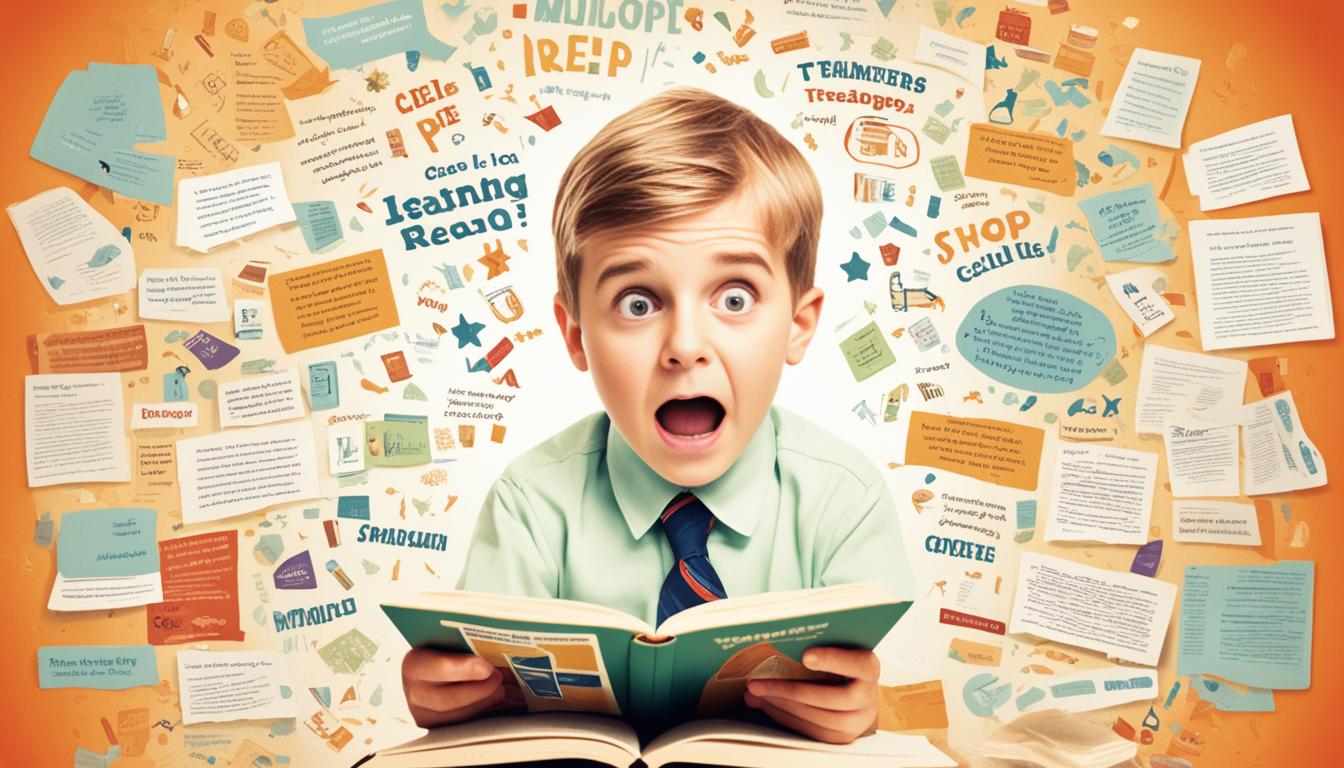Dyslexia is a reading issue that makes it hard for people to connect sounds with words and letters. This challenge affects specific parts of the brain. But, it doesn’t mean those people aren’t smart. In fact, many are quite intelligent.
It’s believed that between 5% and 10% of people have dyslexia. Up to 17% might have some reading issues. Knowing the signs of dyslexia is key to helping early. Kids with dyslexia may struggle with new words, be late in talking, have writing issues, and more. They might also find it hard to remember sequences and often leave out parts when speaking.
Dyslexia occurs in several forms. From having trouble with how words look to finding it hard to sound words out. Many things can cause dyslexia, from genes to how the brain is set up for reading.
There’s no cure for dyslexia, but there are ways to help. Programs that focus on reading and special teaching methods can boost reading skills. This help can make kids with dyslexia do better in their studies.
Stem cell therapy is an exciting new field that might help with dyslexia. When combined with other treatments, it could work to solve the brain and learning issues linked to dyslexia. More study is being done to see how well this new treatment works for dyslexia.
Diagnosis of Dyslexia
Recognizing dyslexia early is key, and teachers often lead the way. Yet, a full diagnosis must come from an expert. This could be an educational psychologist or a speech therapist.
A diagnosis needs several steps, like tests and talking with the child. It takes time, around six months. But quick action can really help the child.
Starting help early is essential. Programs work on reading and language skills to meet the child’s abilities.
Evaluating Dyslexia: The Assessment Process
Tests start the assessment to spot dyslexia. If needed, more specific tests follow to find the real challenges.
The assessment also observes the child and talks to parents and teachers. This gives a full picture for the diagnosis.
The final diagnosis leads to a plan. This plan is designed to fit the child’s needs to help them improve.
Early Intervention: Key to Success
Acting early on dyslexia is very important. Early programs are proven to make a big difference in reading. They use methods known to work.
- Structured literacy instruction: This approach focuses on teaching phonics, decoding skills, and reading fluency.
- Multisensory techniques: These techniques engage multiple senses to enhance learning and memory.
- Individualized support: The intervention is tailored to meet the specific needs of each child, addressing their unique strengths and weaknesses.
Early support helps children with dyslexia do better in school and feel more confident. It fills the gap between their abilities and their potential, paving the way for success.
Stem Cell Therapy for Dyslexia
Stem cell therapy is a new hope for those with dyslexia. It works by addressing the brain’s issues that cause reading difficulties. It’s part of regenerative medicine, focused on rebuilding damaged tissues.
Stem cells are especially important in this field. They can become different cell types, which is key for repairing damaged brain areas. These areas are crucial for understanding language.
Even though it’s early, research is promising. Tests on animals with dyslexia showed better memory and learning after stem cell therapy. These results are encouraging for future human trials.
Clinical trials are ongoing to verify stem cell therapy’s safety and effect on dyslexia. Their goal is to find the best ways to use these treatments for people. This work will help make stem cell therapy a widely available option.
Stem cell therapy works alongside traditional methods, like reading exercises. This holistic approach aims to help patients reach their full potential. It’s about combining the best of both worlds for effective dyslexia care.
Innovation in Dyslexia Treatment
The use of stem cell therapy is a big step in regenerative medicine. It focuses on the very causes of dyslexia, aiming to treat it at its source. This could change how we help and understand dyslexia.
Scientists hope to better reading and language skills with stem cell therapy. But, the bigger goal is to improve life for dyslexic individuals. By tackling the root issues, this therapy could offer lasting benefits and brighter futures for them.
Conclusion
Dyslexia is a reading disability that affects many people. It makes reading, spelling, and processing language hard. Early help is key for kids to do well in school. Reading programs and special teaching methods help them read better.
Regenerative medicine looks at using stem cells to treat dyslexia. This approach is new and still being studied. The goal is to see if it can make a real difference. The science behind stem cell therapy is about fixing the brain and learning problems linked to dyslexia.
We are getting better at understanding and treating dyslexia. Thanks to advanced therapies like stem cell treatment, people with dyslexia have more hope. Regenerative medicine is a game-changer. It brings fresh hope for everyone struggling with learning issues.

